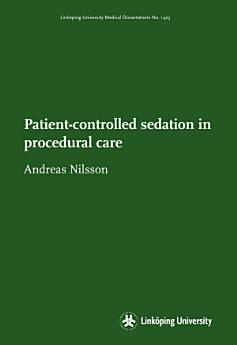Patient-controlled sedation in procedural care
Par šo e-grāmatu
Data on cardiopulmonary changes, level of conscious sedation (bispectral index and Observer’s assessment of alertness/sedation [OAA/S]), pain, discomfort, anxiety, nausea (visual analogue scales), interventions performed by nurse anaesthetists, surgeons’ evaluation of feasibility, procedure characteristics, recovery (Aldrete score) and pharmacokinetic simulation of concentrations of drugs at the effect site supported the analysis and comparison between PCS and anaesthetist-controlled sedation and propofol PCS with or without alfentanil.
PCS can be adjusted to cover a broad range of areas where sedation is needed, which, in this thesis, included burn care, gynaecological out-patient surgery and endoscopic procedures for the diagnosis and treatment of diseases in the bile ducts (endoscopic retrograde cholangiopancreatography [ERCP]). PCS for burn wound treatment demands the addition of alfentanil, but still seems to be safe. PCS was preferred by the patients instead of anaesthetist-controlled sedation. The addition of alfentanil to PCS as an adjunct to gynaecological surgical procedures also using local anaesthesia increases the surgeon’s access to the patients, but impairs safety. Apnoea and other such conditions requiring interventions to restore respiratory function were seen in patients receiving both alfentanil and propofol for PCS. Patients’ experiencing perioperative pain and anxiety did not explain the effect-site concentrations of drugs. Different gynaecological procedures and patients’ weights seemed to best explain the concentrations. For discomfort and pain during the endoscopic procedure (ERCP), propofol PCS performs almost the same as anaesthetist-performed sedation. Overall, as part of the pre-operative procedures, PCS does not seem to be time-consuming. In respect to the perioperative perspective, PCS supports rapid recovery with a low incidence of tiredness, pain, and post-operative nausea and vomiting (PONV).
The data suggest that PCS further needs to be adapted to the patient, the specific procedure and the circumstances of sedation for optimal benefit and enhanced safety.




